The leaves of the turmeric plant are large, elongated ovals with a wavy edge, growing from rhizomes and wrapping around each other to form a pseudo-stem. The flowers grow in clusters in the middle of the foliage and are cylindrical or ovoid in shape, with colors ranging from yellow, white to pinkish hues. They exude a subtle, pleasant fragrance characteristic of the ginger family, imparting a sense of calm and relaxation. However, turmeric flowers are a rare sight as the plant primarily channels its energy into growing its prized rhizomes.
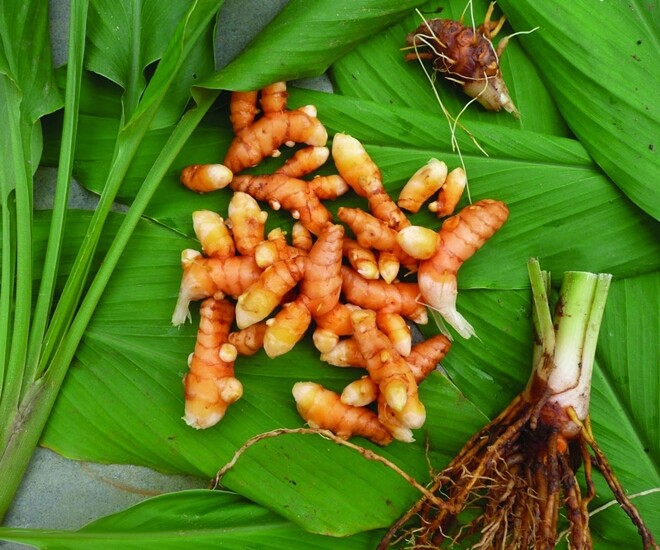
The most valuable part of the turmeric plant is its rhizome, which finds extensive use in cuisine and medicine. Specifically, turmeric rhizomes are packed with nutrients such as vitamins C, E, and K, iron, potassium, calcium, and, most notably, curcumin – a compound known for its potent antioxidant and anti-inflammatory properties.
Curcumin aids in the treatment of arthritis, stomach aches, memory enhancement, and the prevention of cardiovascular diseases. Notably, this compound is also considered a formidable adversary of cancer due to its ability to inhibit cancer cell growth and safeguard vital organs from harmful agents. In traditional Eastern medicine, turmeric rhizomes are further believed to possess pain-relieving, pus-reducing, wound-healing, and anti-acne properties.
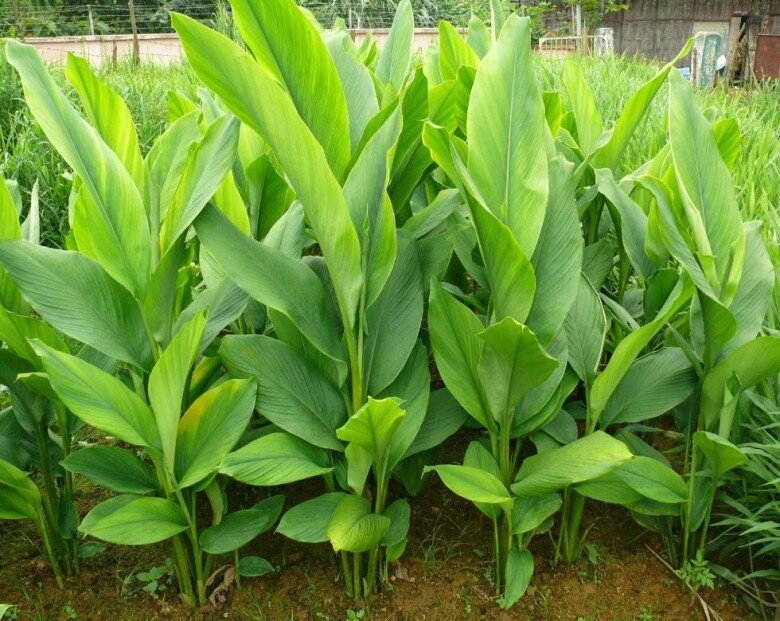
In the culinary realm, turmeric rhizomes are employed to impart a distinctive color and flavor to various dishes, such as braised fish, meat stewed with turmeric, stir-fried entrails, and eel cooked with turmeric. Additionally, turmeric leaves can be transformed into delectable dishes, especially when stir-fried, braised, or used as a liner for steaming. Some popular preparations include stir-frying with entrails, vermicelli, eel, frog legs, and fish braised with turmeric leaves.
Owing to its myriad benefits, turmeric has earned the titles of “Queen of Spices,” “Golden Spice,” and “Superfood.”
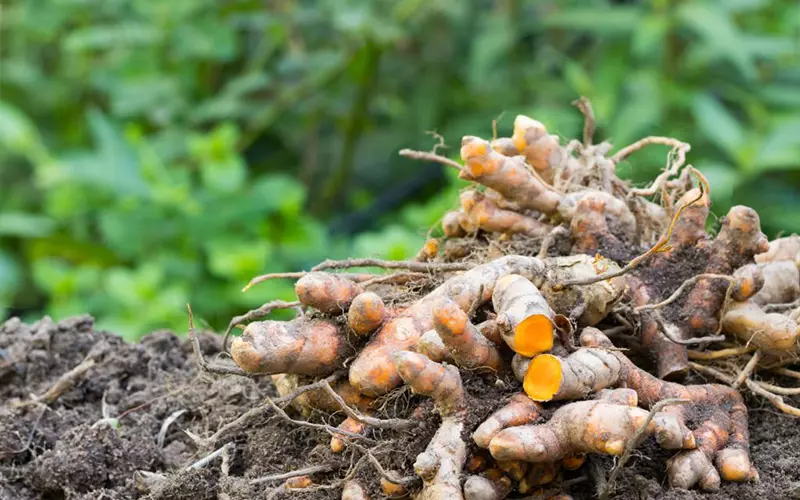
The Feng Shui Significance of Growing Turmeric at Home
Aside from its culinary and medicinal uses, the turmeric plant holds significant Feng Shui value. Growing turmeric in your garden is believed to attract wealth, good fortune, and new beginnings.
Turmeric typically blooms during the summer, from March to May, but these occurrences are rare. Thus, when a turmeric plant flowers, it is considered a positive omen, bringing positive energy, balancing Yin and Yang, and attracting luck and prosperity to the homeowner.
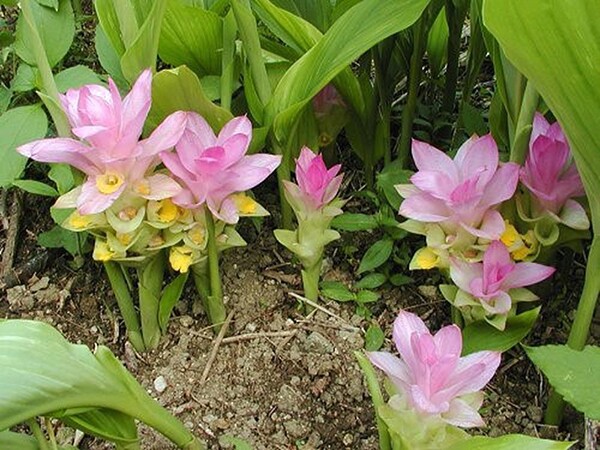
A tree in full bloom symbolizes success and a worthy reward for one’s efforts, heralding new opportunities and positive beginnings.
Usually, a turmeric plant needs to reach a certain age before it can flower. Additionally, specific environmental conditions, such as optimal sunlight, temperature, and humidity, are necessary to induce blooming.
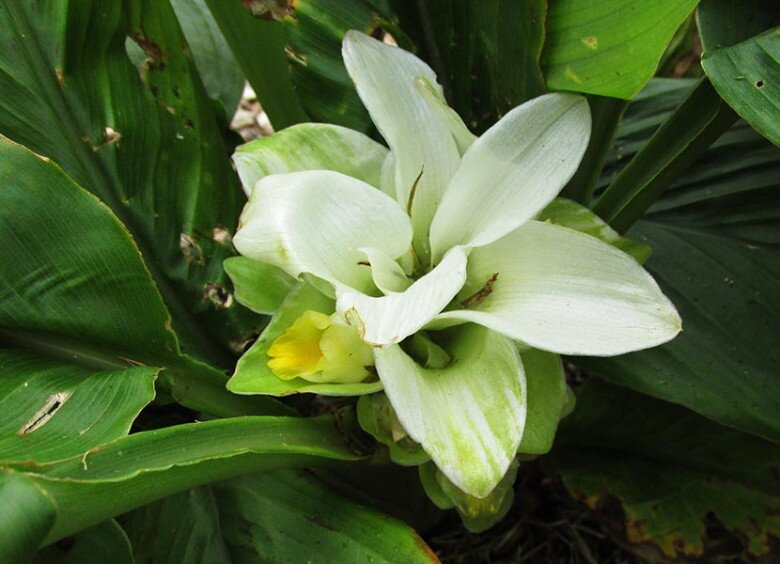
How to Grow and Care for Turmeric at Home
While turmeric can be grown year-round, the rainy season is ideal, as the climate is moist, and the soil is adequately hydrated. Turmeric is an asexually reproducing plant, typically grown from its rhizomes. When planting, select healthy, disease-free rhizomes from a mature plant that has already flowered. The rhizomes should be firm, neither too young nor too old, and free from damage.
Before planting, separate a section with 2-3 bud eyes and soak it in damp sand. Within 5-7 days, the rhizome will sprout.
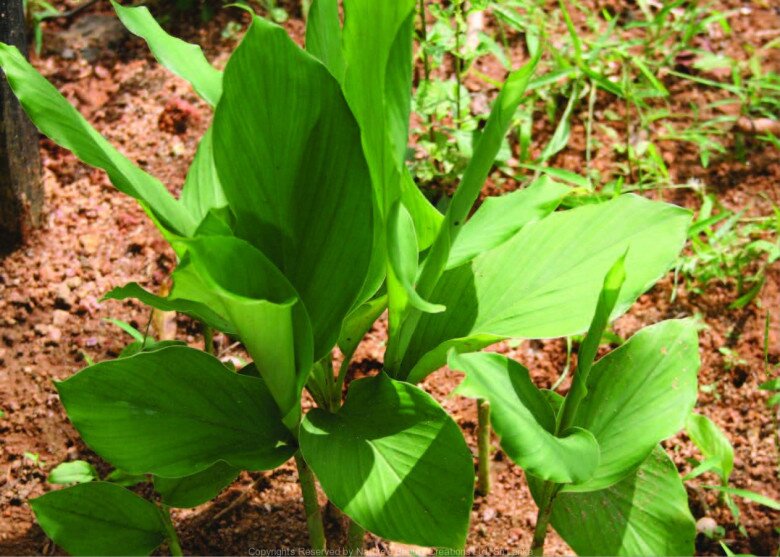
During the cultivation process, pay attention to the following factors:
– Soil: Turmeric thrives in well-drained, nutrient-rich, and loose soil, such as sandy loam, light loam, or forest soil, ensuring optimal growth conditions.
– Light: Turmeric requires ample sunlight, so place it in a sunny spot where it can receive at least 6-8 hours of sunlight daily. However, avoid excessive sunlight to prevent leaf scorching and wilting.
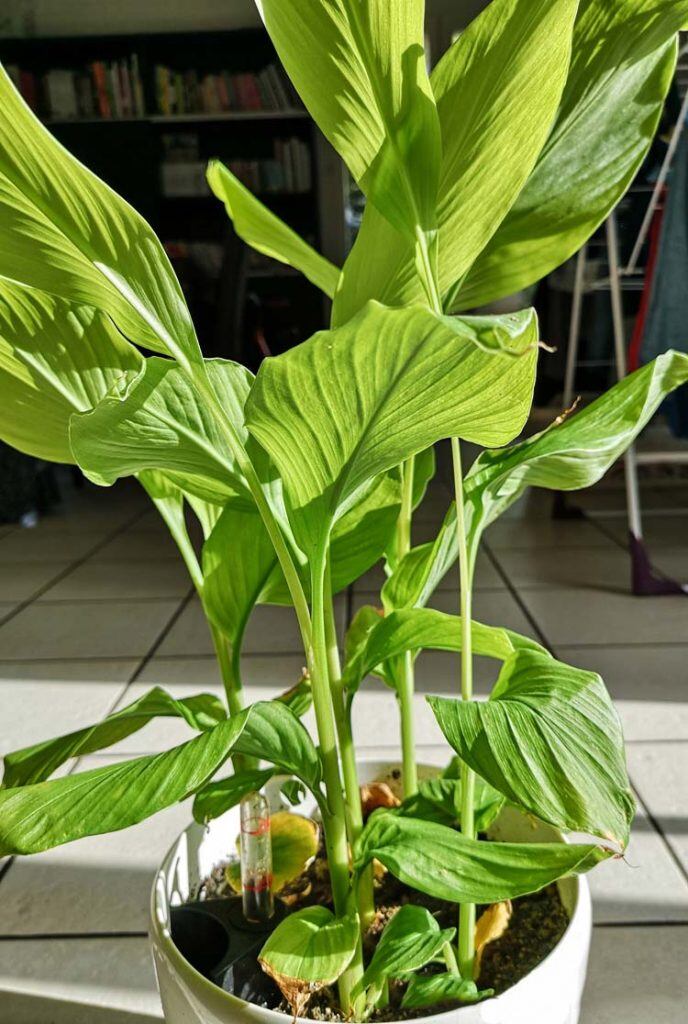
– Watering: While turmeric is not a water-loving plant, maintain moist soil. You can cover the soil surface with a layer of straw to retain moisture and prevent water loss.
– Fertilization: When the turmeric plant has 2-3 leaves, apply organic fertilizer such as manure or chicken droppings. Provide additional fertilizer every 20 days to ensure sufficient nutrient supply.









